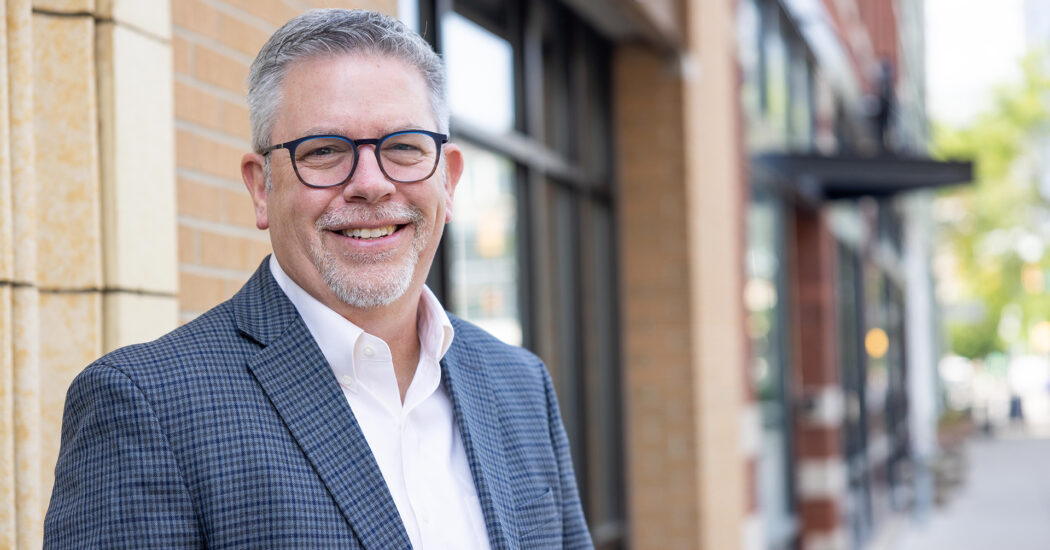Communicating Effectively: A Conversation with Project Manager/Associate Jen Carroll, AIA
-
Category
Careers + Culture, Leadership -
Posted By
Schmidt Associates -
Posted On
Dec 04, 2023

Early in her architecture career, Project Manager/Associate Jen Carroll had a “rubber meets the road” experience that taught her the art of project management and the importance of being aware of the bigger picture with complex design projects. Since then, she’s been thoughtfully leading internal and external teams with sharp attention to detail and keen sense for helping Owners envision and create practical, beautiful, and orderly buildings.
Known for her friendly, cheerful demeanor and a reputation for keeping projects moving on-time and on-budget, Jen is a master at orchestrating and balancing many moving priorities. While no day is ever the same and how she does it may vary between Owners, at the heart of everything she does is effective communication. To get a better understanding of the role communication plays in her job, we talked with Jen and gathered her perspective on the importance of two-way communication.
To offer context, can you share your job responsibilities on any given day?
Because things are always coming, I must stay very organized to help our teams succeed. My day typically starts by checking my phone as soon as I get up, and I am usually resolving the low-hanging fruit first. Each day, I have multiple meetings with my teams, I am constantly answering emails, making phone calls, and following up with others, whether virtually or in-person, and I always have a lot of “to do” lists that are necessary to keep projects moving. I also utilize Schmidt Associates’ online project management tools that are made available to support my work, and that saves a lot of time and allows me to focus where I am needed most.
Communication is clearly a necessity. Why is that?
It absolutely is. I often say that the role of a project manager is to be a bridge between the AEC teams and our Owners, and you can’t be a good project manager without being a strong communicator. As a project manager, we are acting as translators between what an Owner wants and what they get, and outcomes are only as good as what is communicated to the contractor. Our projects are very complex, and communication is the bridge.
What is your communication style?
I am approachable, amicable, and highly collaborative, but I also can be the bad cop when necessary. Whenever I communicate, I want to be very transparent, but I also want to listen first to understand, gather background and show that I am sensitive to the audience and recognize when there’s confusion. I always want to build a strong foundation and be clear in what I am sharing. Relationships are also extremely important. Expressing gratitude is something I do often as people are less likely to misconstrue your intent if they know you are on their side and appreciate what they do.
What kinds of details are you discussing and communicating with your teams?
While I trust that everyone on the project team is doing their jobs, I also acknowledge that there are things I don’t know and am not an expert on either. Sometimes, the not knowing helps facilitate conversations that need to happen. With Owners, I am often communicating the project details so that they understand the impacts and can make the best decisions for their future buildings.
At what phases of a project do you communicate with your teams?
While communication is always ongoing, as a project manager, it’s my job to bring Owners together first for a kickoff meeting to discuss the project goals and objectives. That is followed by communication with a broader group to establish a rhythm and engage the other teams. Throughout the design process, we are always discussing project progress and schedules, and hosting touch base meetings, room-by-rooms, puzzle piece exercises, and walk-throughs at the end. We do this because the Owner needs to be happy and it’s our job to establish trust with them.
Do you employ any specific communication strategies for project success?
Strategies will vary depending on the client needs, but there’s always a lot of constant, consistent communication. As a project manager, we must be diplomatic and recognize that a lot can go wrong, but effective communication goes a long way in making things go right.
Has effective communication taught you any important lessons that drives your work today?
Yes! There’s so much I have learned, but the main three include realizing that what you think you say isn’t always what people hear, so approach things with humility and never let pride get in the way. Also, not everyone knows the same information, so tailoring your message is important. Finally, people are always more receptive to what you’re communicating when they know you care and are their advocate.







